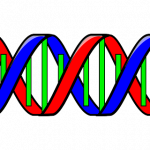You might think that your personal health is all about the choices you make, but environmental factors can have a big impact on your well-being. From pollution and harmful chemicals to poor nutrition and lack of physical activity, there are many ways that your surroundings can affect your health. However, there are also steps you can take to mitigate these effects and improve your overall wellness.
It’s easy to feel overwhelmed by the idea of environmental factors affecting your health, especially when so many of them seem beyond your control. But understanding how these factors work and what you can do about them is an important step towards taking charge of your own well-being.
In this article, we’ll explore some of the most common environmental risks to personal health and provide strategies for reducing their impact on your life. Whether you’re looking to improve specific aspects of your health or simply want to live a more balanced lifestyle, understanding the role of the environment in shaping our well-being is key.
The Impact of Pollution on Personal Health
 You’re probably breathing in more pollution than you realize, and it’s not doing your body any favors. Air quality is a major environmental factor that affects personal health.
You’re probably breathing in more pollution than you realize, and it’s not doing your body any favors. Air quality is a major environmental factor that affects personal health.
Poor air quality can have a negative impact on the respiratory system, leading to various respiratory diseases such as asthma, bronchitis, and emphysema. The effects of exposure to polluted air can vary depending on the individual’s health status and age.
Children and older adults are at a higher risk of developing respiratory diseases due to their weaker immune systems. Exposure to poor air quality can also aggravate existing health conditions such as allergies and heart disease.
To mitigate the negative effects of pollution on personal health, one solution is to reduce exposure by staying indoors during times of high pollution levels or wearing protective masks when necessary. Additionally, supporting policies that promote cleaner air through reducing emissions from factories and vehicles can also help improve overall air quality for everyone’s benefit.
It is important to prioritize measures that protect our environment while promoting public health simultaneously.
Harmful Chemicals in the Workplace and at Home
Watch out for the toxic chemicals lurking in your workplace and home, they’re like hidden snakes waiting to strike. Toxic cleaning products, such as bleach and ammonia, can be dangerous if not handled properly. They contain hazardous chemicals that can cause skin irritation, respiratory problems, and even chemical burns. Make sure to always wear gloves and a mask when using these products.
Occupational hazards are also a concern in the workplace. Many industries use harmful chemicals on a daily basis that can have long-term effects on employee health. For example, workers who are exposed to asbestos may develop lung cancer or mesothelioma later in life. It’s important for employers to provide proper training and safety equipment to protect their employees from these hazards.
In addition to workplace dangers, there are also toxic chemicals present in many homes. Some common household items such as air fresheners and pesticides contain harmful ingredients that can cause headaches, nausea and other health problems over time. Be sure to read labels carefully before purchasing any product for your home and choose natural alternatives whenever possible.
Remember, being aware of potential environmental factors that affect personal health is crucial in mitigating their impact. Take steps towards protecting yourself by educating yourself about the risks posed by toxic cleaning products at home and occupational hazards in the workplace. By doing so, you can safeguard your well-being while still having a clean home and earning an income doing what you love!
The Connection Between Nutrition and Chronic Diseases
The link between nutrition and chronic diseases is a topic that many people are interested in because it affects their overall well-being.
Dietary interventions can make a significant difference in preventing or managing chronic diseases such as heart disease, diabetes, obesity, and some types of cancer.
Nutritional deficiencies can lead to poor health outcomes by weakening the immune system and increasing the risk of infection.
A balanced diet that includes a variety of fruits, vegetables, whole grains, lean proteins, and healthy fats can help prevent chronic diseases.
For example, consuming less saturated fat and more fiber-rich foods can reduce the risk of heart disease.
Similarly, eating foods high in antioxidants like vitamin C and E may lower the risk of certain cancers.
However, it’s important to note that there is no one-size-fits-all approach when it comes to nutrition.
What works for one person may not work for another.
Incorporating healthier food choices into your diet doesn’t have to be complicated or expensive.
Small changes like swapping soda for water or adding an extra serving of vegetables at dinner can make a big difference over time.
Additionally, working with a registered dietitian or healthcare provider can provide personalized recommendations based on individual health needs and goals.
By making informed dietary choices and staying mindful of nutritional deficiencies, you can take steps towards improving your overall health and reducing the risk of chronic diseases.
The Importance of Physical Activity for Health
If you want to feel your best and stay healthy, it’s important to incorporate physical activity into your daily routine. Regular exercise provides numerous benefits for your body, like maintaining a healthy weight, reducing the risk of chronic diseases such as heart disease and diabetes, and improving mental health. To experience these benefits, consistency is key.
Aim for at least 150 minutes of moderate-intensity aerobic activity every week or 75 minutes of vigorous-intensity aerobic activity. Physical activity not only improves physical health but also has positive effects on mental health. Exercise releases endorphins that boost mood and reduce stress levels.
Studies have shown that regular exercise can help manage symptoms of anxiety and depression while also improving cognitive function. Additionally, engaging in physical activities with others can increase social connections and promote feelings of happiness. Incorporating physical activity into your daily routine doesn’t have to be difficult or time-consuming.
Simple steps like taking the stairs instead of the elevator or going for a walk during lunch break can make a difference. Find an activity you enjoy doing such as dancing or swimming to make it easier to stick with it long-term. Remember that any amount of movement is better than none at all!
Strategies for Reducing Exposure to Environmental Health Risks
It’s time to take control of the risks in our daily lives and make changes that can protect ourselves and our loved ones. In addition to physical activity, adopting eco-friendly habits and using natural cleaning products can help reduce exposure to environmental health risks.
By making small changes in your daily routine, you can significantly improve the quality of air you breathe indoors. One way to reduce indoor air pollution is by choosing natural cleaning products instead of harsh chemical cleaners. Instead, opt for natural alternatives like vinegar or baking soda. You can also look for certified green cleaning products with third-party certifications like Green Seal or EcoLogo.
Another way to mitigate environmental health risks is by being mindful of eco-friendly habits at home and at work. Use reusable bags instead of plastic bags when shopping, switch off lights when not in use, plant trees around your house or office space to absorb pollutants from the air, and use public transportation or carpool whenever possible to reduce carbon footprint and promote a healthier environment for everyone.
These small lifestyle changes may seem insignificant but can have a significant impact on personal health as well as global sustainability. Incorporating these strategies into your daily life may take some effort initially but will ultimately pay off in terms of improved health outcomes for you and those around you.
Remember that every step towards a healthier environment counts!
What are the long-term effects of exposure to pollution on personal health?
Your brain is like a delicate flower, and air pollution can wither it away.
The impact of air pollution on cognitive function is becoming increasingly clear, with studies linking exposure to decreased attention span, memory problems, and even reduced IQ scores.
But don’t despair; there are strategies you can use to reduce your exposure to environmental toxins in daily life.
Consider wearing a mask when outside in polluted areas or investing in an air purifier for your home or office.
You can also make simple lifestyle changes, such as using natural cleaning products and avoiding smoking or secondhand smoke.
By taking proactive steps to protect yourself from harmful pollutants, you can keep your mind sharp and healthy for years to come.
How do harmful chemicals in the workplace and at home affect children’s health differently than adults?
Childhood exposure to harmful chemicals in the workplace and at home can have significant health disparities compared to adults. Children are more vulnerable to environmental toxins due to their developing bodies, which can lead to long-term health effects such as respiratory problems, developmental delays, and even cancer.
Additionally, children may be exposed to higher levels of toxins than adults due to their smaller size and tendency to put objects in their mouths. It’s crucial for parents and caregivers to take steps towards reducing childhood exposure by using non-toxic cleaning products, ensuring proper ventilation in the home, and advocating for safer working conditions.
By taking these measures, we can help protect our children’s health and prevent future health disparities.
Are there any specific diets or foods that can help prevent chronic diseases?
Looking for ways to prevent chronic diseases? Nutrition recommendations and disease prevention strategies can help.
For example, let’s say you’re at risk for heart disease. You might want to consider following the Mediterranean diet, which emphasizes plant-based foods like fruits, vegetables, whole grains, legumes, nuts, and seeds. It also includes healthy fats like olive oil and fish instead of red meat.
Studies have shown that this type of diet can lower your risk of heart disease by up to 30%. Other diets that have been linked to lower rates of chronic diseases include the DASH diet (which focuses on lowering blood pressure) and the vegetarian or vegan diet (which has been shown to reduce the risk of cancer).
By making small changes in your eating habits based on these nutrition recommendations and disease prevention strategies, you may be able to significantly reduce your risk of developing chronic diseases.
Can physical activity alone mitigate the negative effects of exposure to environmental health risks?
To mitigate the negative effects of environmental health risks, physical activity can certainly help. But outdoor vs. indoor physical activity may play a role in how effective it is.
Outdoor activities can expose you to more pollutants and allergens, while indoor activities keep you away from those factors.
However, community engagement has been shown to be just as crucial in mitigating these risks. By working together with your community to advocate for healthier environments and better regulations on pollution, you can make a significant impact on your personal health and the health of those around you.
So while physical activity is important, it’s only one piece of the puzzle when it comes to staying healthy in an environment that’s not always conducive to good health habits.
How can individuals advocate for environmental policy changes that will benefit public health?
To advocate for environmental policy changes that benefit public health, you’ll need to employ effective advocacy strategies.
This includes targeting policies that address the most pressing issues affecting public health and promoting public awareness of these issues through grassroots movements.
One key strategy is to build coalitions with other like-minded groups and individuals who share your concerns about environmental risks to personal health.
You can also engage in direct lobbying efforts by contacting elected officials or policymakers at all levels of government, and voicing your support for targeted policy reforms that prioritize public health over corporate interests.
By staying informed, mobilizing others, and working collaboratively towards a common goal, you can make a real difference in protecting the environment and mitigating its negative impacts on personal health.
So, now you know the various environmental factors that can affect your personal health and ways to mitigate them. However, it’s important to understand that these strategies don’t work in isolation.
You need to adopt a holistic approach towards improving your health by combining all of these measures.
On one hand, while there are some things beyond your control like pollution levels in your city or toxic chemicals in the workplace, on the other hand, there are various small changes you can make in your lifestyle such as eating a healthy diet and incorporating physical activity into your routine.
By being aware of the potential risks and taking steps to minimize them, you can ensure that you’re doing everything possible to protect yourself from environmental harm and maintain good health.









